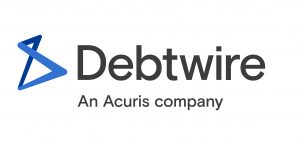
Business Lines: Secondary Market Mortgage Services
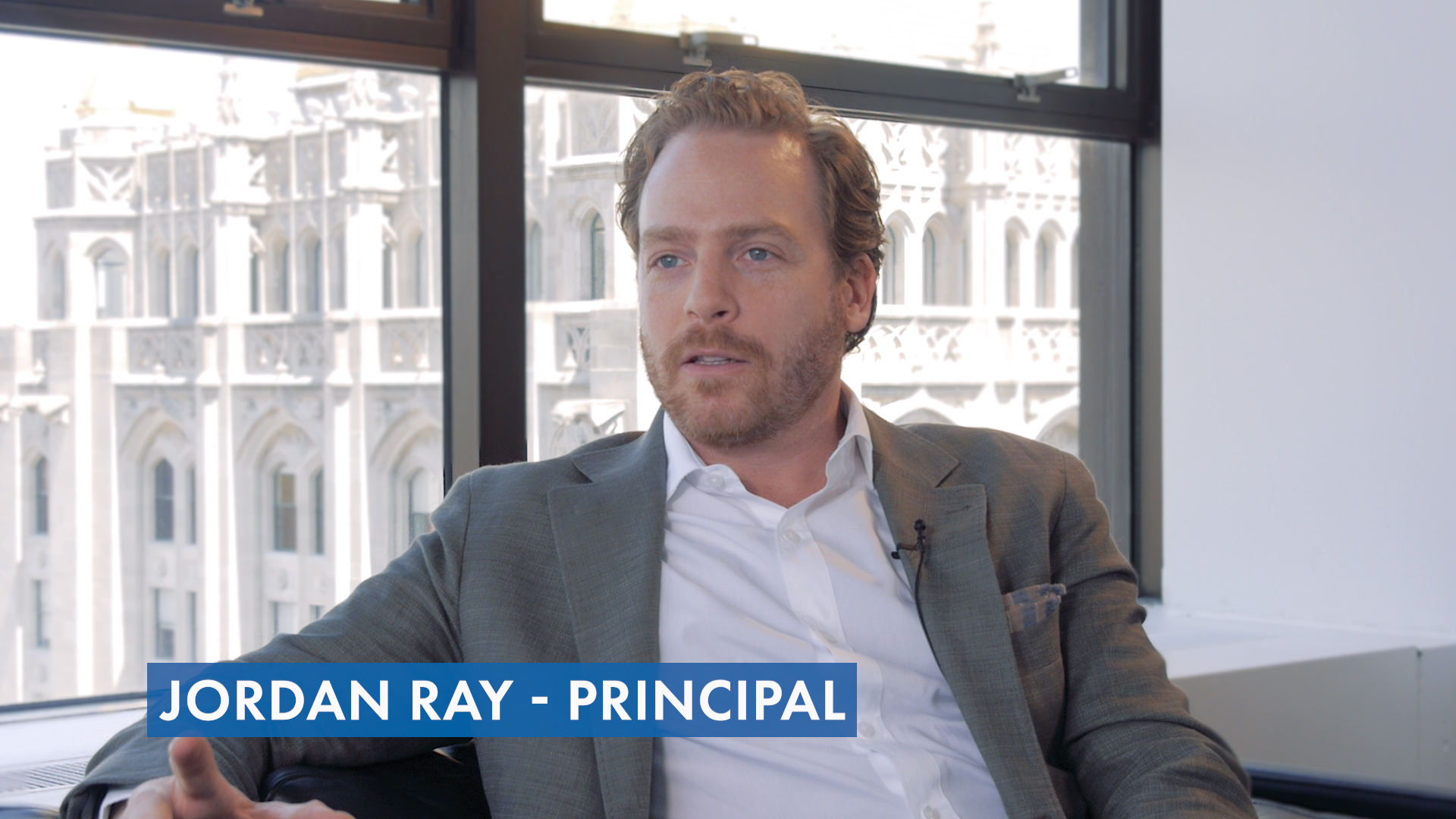 Jordan Ray (Principal) On Mission Capital [VIDEO]
Jordan Ray (Principal) On Mission Capital [VIDEO]
Mission Capital’s Principal, Jordan Ray, discusses an array of topics about Mission Capital. From the company origins, business philosophies, to what the future of the company has in store, this is a fascinating insider’s view about the company. Watch the first two chapters below.
If you’ve ever been curious about learning more about Mission Capital, watch these videos now.
To learn more about Jordan Ray, please visit his team page here.
JORDAN RAY 1 | ABOUT THE DEBT & EQUITY FINANCE TEAM
JORDAN RAY 2 | WHAT SEPARATES US FROM THE COMPETITORS
Commercial real estate professionals were largely unsurprised by the Federal Reserve’s interest rate hike Wednesday, and many do not expect the move to have an immediate impact on the market. Should the Fed continue to bump short-term rates at a fast clip, however, it could adversely impact the industry and the overall economy.
June 13, 2018
“In general, these moves are a function of an improving economic environment whereby inflation is expected to rise. Higher rates will increase the cost of capital, but there is a record amount of fundraising seeking a home in CRE and so we do not anticipate higher short-term interest rates to diminish access to capital,” Cushman & Wakefield Economist and Americas Head of Forecasting Rebecca Rocket said in an email.
Following the monthly two-day Federal Open Market Committee meeting, Fed officials increased the benchmark federal-funds rate by a quarter-percentage point to a range of 1.75% to 2%. This marked the second move of the year, after the Fed bumped rates to a range of 1.5% to 1.75% in March.
 Recently appointed Fed Chair Jerome Powell suggested two more rate hikes could be on the horizon as the Fed looks to temper a growing economy and keep the inflation rate at 2%. The labor market continues to boom with employers adding 223,000 jobs in May and unemployment reaching historic lows of 3.8% — a level the U.S. has only experienced twice in the past half-century.
Recently appointed Fed Chair Jerome Powell suggested two more rate hikes could be on the horizon as the Fed looks to temper a growing economy and keep the inflation rate at 2%. The labor market continues to boom with employers adding 223,000 jobs in May and unemployment reaching historic lows of 3.8% — a level the U.S. has only experienced twice in the past half-century.
“The decision you see today is another sign that the U.S. economy is in great shape,” Powell said during the press conference following the meeting, the Wall Street Journal reports. “Growth is strong. Labor markets are strong. Inflati on is close to target.”
Should the Fed maintain its pace of rate hikes, commercial real estate developers and borrowers could be adversely affected by higher lending costs and tighter access to construction financing, which could, in turn, stifle deal volume and further compress margins for investors. As it stands, another two bumps in short-term rates this year are not expected to stifle investor access to capital, but it will lead to higher borrowing costs.
The market foresees a 75% probability of a third move in September and a 50% chance of a fourth and final move in December, according to a Cushman & Wakefield survey. Bisnow asked six economists and real estate professionals in the debt and finance space about the impact of this move on the industry. Read their responses below.
Mission Capital Advisors Director of Debt and Equity Finance Group Jillian Mariutti
What was your reaction to this boost in rates?
FOMC said in March that it was likely to raise rates two more times this year, so — especially with the economy humming along so strongly — today’s announcement was not surprising, and didn’t seem to give the markets any shock. It is also now expected that there will be two more rate hikes this year, for a total of four (not three, as was expected in March).
Some economists predict the Fed will boost rates four times this year. How will these moves impact CRE lending activity and access to capital, if at all?
Thus far, the rate hikes have not made any major waves. However, we may see some borrowers in need of refinancing their properties try to lock in loans before further increases. It’s noteworthy that the FMOC median projections show the Fed funds rate climbing from 2.375% in 2018 to 3.375% in 2020. LIBOR generally lives at about 20 basis points above the Fed target rate, so we could see LIBOR north of 2.5% by the end of the year and more than 3.5% by 2020. This will obviously have a significant impact for CRE borrowers with floating-rate debt.
What does this move signal about the state of the U.S. economy and its continued recovery?
The rate hike is definitely an expression of the strength of the overall economy, which will hopefully have positive ripple effects across the industry. The factors that the Fed will look at in determining whether to make future rate hikes include sustained expansion of economic activity, the strength of the labor market and inflation near their 2% objective. With unemployment just below 4% — its lowest rate since 2000 — and other factors on track, everything points to the Fed hitting its expectation of four increases in 2018.
Where does the 10-year Treasury stand now in relation to the long-term average, and what does this rate hike signal for the industry moving forward?
The 10-year now stands at 2.98%, well below its long-term average.
Any parting thoughts?
Since LIBOR moves in lockstep with the Fed rate, more or less, if we do indeed have two additional rate hikes this year, that would continue to push LIBOR up and increase the cost of capital. As a result of that, we’re likely to see an increasing number of borrowers execute hedges to mitigate their interest-rate risk.
Ten-X Chief Economist Peter Muoio
What was your reaction to this boost in rates?
We were unsurprised. The Fed had signaled this increase and the strength of the economy suggested that there would be no hesitation to the increase.
Some economists predict the Fed will boost rates four times this year. How will these moves impact CRE lending activity and access to capital, if at all?
We believe that CRE investors have already factored this into their thinking. Capital remains available and we don’t foresee this diminishing. Higher financing costs and upward pressure on cap rates will likely exert downward pressure on pricing and perhaps make negotiations more prolonged.
What does this move signal about the state of the U.S. economy and its continued recovery?
The U.S. economy is strong, and the job market is healthy. Consumers are confident and spending, so the Fed continues to tighten as expected.
Where does the 10-year Treasury stand now in relation to the long-term average, and what does this rate hike signal for the industry moving forward?
The 10-year is still low by historical standards, it’s just up from the extreme lows of recent years. Clearly, increases in rates can have an impact on pricing and deal flow, but we are not at some choke point for the CRE capital markets.
Any parting thoughts?
Absent some external disruption to the economy, the Fed will continue to tighten.
Cushman & Wakefield Economist and Americas Head of Forecasting Rebecca Rocket
What was your reaction to this boost in rates?
This was a widely expected move, so the only cause for concern would been if the FOMC did not vote to raise the federal funds rate.
Some economists predict the Fed will boost rates four times this year. How will these moves impact CRE lending activity and access to capital, if at all?
We agree that the FOMC is likely to vote to raise rates at four meetings this year, but decisions will continue to be data-driven. We are halfway there. In general, these moves are a function of an improving economic environment whereby inflation is expected to rise. Higher rates will increase the cost of capital, but there is a record amount of fundraising seeking a home in CRE and so we do not anticipate higher short-term interest rates to diminish access to capital.
What does this move signal about the state of the U.S. economy and its continued recovery?
It signals that the economy is performing well and we are well beyond the point where the expansion is considered a “recovery.” Inflation is rising because the labor market is tight, and the U.S. and global economies are strong. It also signals that the FOMC anticipates continued growth and inflation, since it has been clear that it is willing to allow inflation to overshoot its target for short periods.
Where does the 10-year Treasury stand now in relation to the long-term average, and what does this rate hike signal for the industry moving forward?
The 10-year Treasury rate ended the day around 3%, which is 285 basis points below the historical average. A hike, while signaling that the economy is improving and inflation brewing, does not reflect the fact that capital is still relatively cheap compared to the past. Longer-term interest rates will continue to rise and commercial real estate will continue to benefit from continued economic and job growth. Jobs have been created at a 2 million year-over-year pace for a record 62 consecutive months now, which puts into perspective some of the tailwinds buttressing demand for commercial space.
JLL Ports, Airports and Global Infrastructure Managing Director, Economist and Chief Strategist Walter Kemmsies
What was your reaction to this boost in rates?
I was not surprised. [Every] cost-push factor is going up: commodity prices, labor, transportation rent/lease rates. The Fed is exactly on target.
Some economists predict the Fed will boost rates four times this year. How will these moves impact CRE lending activity and access to capital, if at all?
The impacts are already being felt in lending activity, not just in real estate but also infrastructure — the surge in municipal Bain’s issuance is substantial in the last few months.
What does this move signal about the state of the U.S. economy and its continued recovery?
[It] says demand growth remains in excess of supply growth [and signals the] need to moderate demand growth via rate increases.
Any parting thoughts?
Consumer balance sheets are still fragile. I am struggling a bit to see four holes this year. But [I] am in consensus on four hikes this year.
Colliers International USA Chief Economist Andrew Nelson
What was your reaction to this boost in rates?
With inflation running at multi-year highs simultaneous with unemployment at multi-decade lows, there should be little surprise that the Fed is moving more consistently now to cool the economy. Since starting to raise rates in December 2015, the Fed has hiked the Federal Funds Target Rate a total of seven times in 2.5 years, with a cumulative increase of 175 basis points.
With another two hikes likely this year and more to follow next year, we can expect these hikes to start taking their toll — eventually.
But context is important, as these hikes are rather measured compared with prior economic cycles. In the last expansion, for example, the Fed raised rates 17 times in the two years from mid-2004 through mid-2006, with a cumulative increase of 425 basis points. But even then, the economy still ran hot for another two years into 2008 as the impacts of rate hikes take time to work through the system.
So the recent rate hikes will have limited immediate impact on the economy and property markets. But expect the economy to start cooling next year as higher interest rates begin to slow corporate borrowing and consumer spending — just as the fiscal stimulus from the federal tax cuts and spending hikes begin to fade.
JLL Chief Economist Ryan Severino
What was your reaction to this boost in rates?
Completely as I expected. Not remotely a surprise.
Some economists predict the Fed will boost rates four times this year. How will these moves impact CRE lending activity and access to capital, if at all?
If we get two more hikes of 25 basis points this year, we will get closer to the point where interest rate increases have a more prominent impact on CRE and the economy. Individual rate hikes do not mean much, but the cumulative impact over time will.
What does this move signal about the state of the U.S. economy and its continued recovery?
The economy is performing well, especially relative to potential. Fiscal stimulus should have a robust positive impact over the next couple of quarters.
Where does the 10-year Treasury stand now in relation to the long-term average, and what does this rate hike signal for the industry moving forward?
Most of the upward movement in the 10-year had probably happened already unless the Fed raises their long-run target rate. I’d expect more movement upward at the short-end than the long-end, causing the yield curve to flatten further. That typically happens during tightening cycles.
Any parting thoughts?
For now, the interest rate environment remains positive for the economy and CRE, but as rate increases continue, they will eventually slow the economy and have an impact on the market.
Read the full story here:
Construction Financing: “When To Go To Market”
Ari Hirt and Steve Buchwald of the Debt & Equity Finance Desk discuss “When To Go To Market,” a new video detailing the complexities of Construction Lending.
Highlights from When To Go To Market
- When to approach lenders for construction financing?
- Ideal time to approach lenders is three to six months.
- Conditions to close: building permits, construction drawings, and buyout of major sub-contractors.
- Risks of going out too early: lender deal fatigue, market change, and budget increases.
- More construction financing in 2018 than 2017.
If you are not aware already, Soho House Chicago is an incredible hotel experience. Mission Capital arranged financing on this deal. Soho House Chicago is located in the heart of Chi-Town in the West Loop. We strongly suggest visiting if you’re in the area.
Images from our site visit:

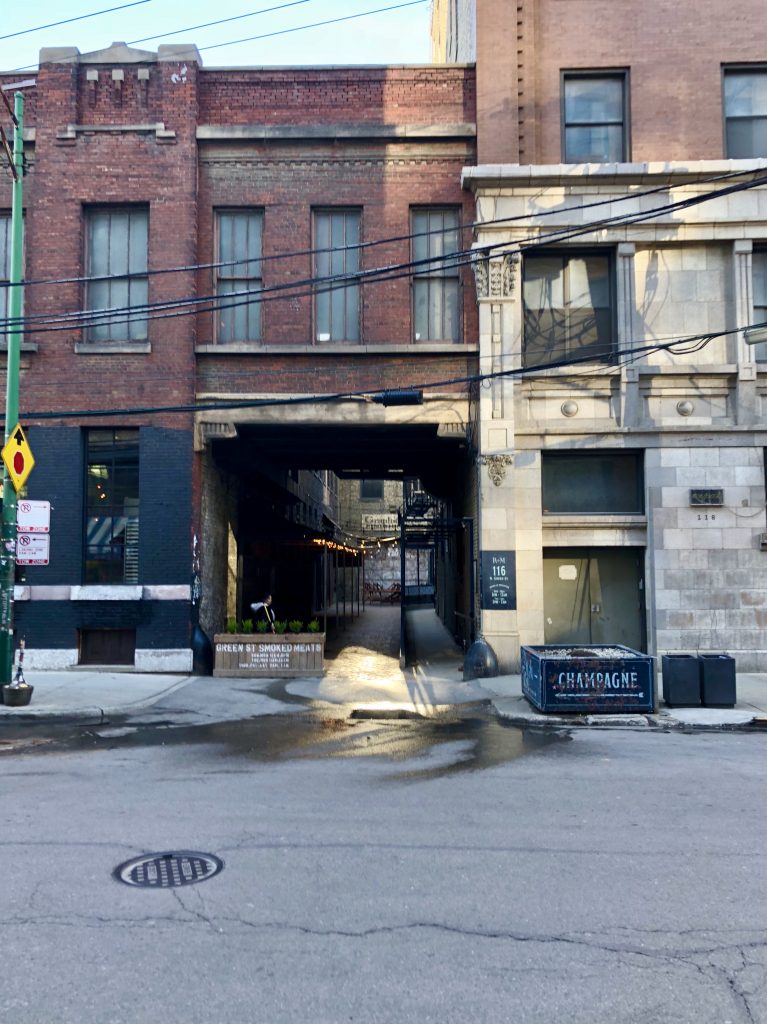
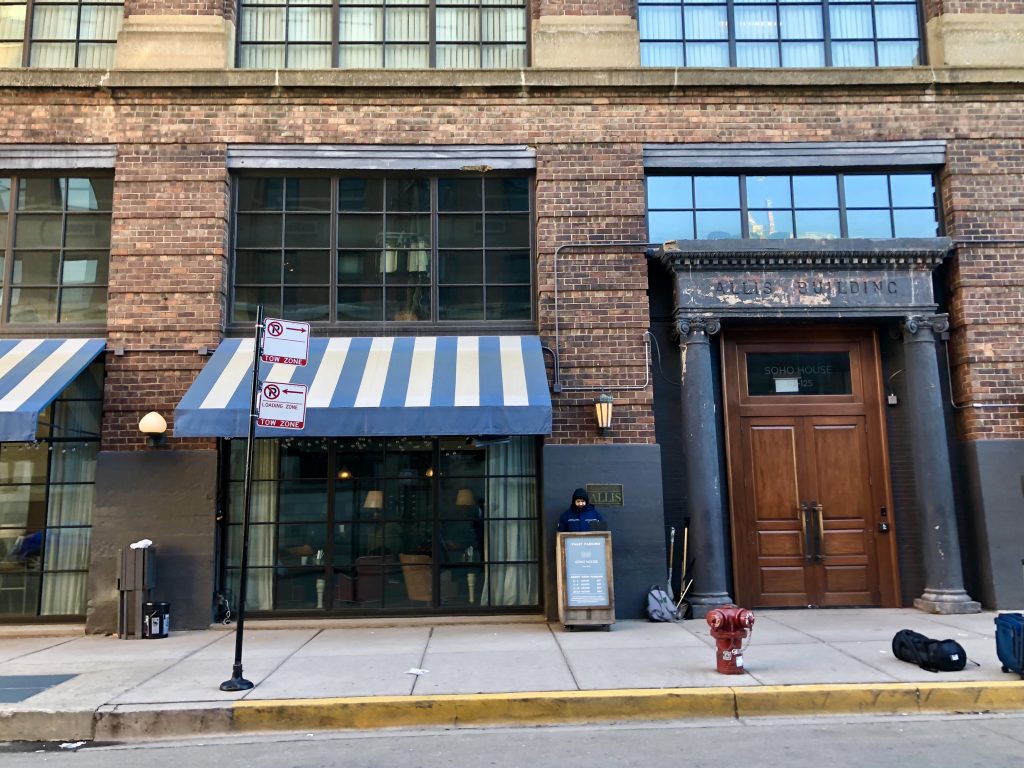

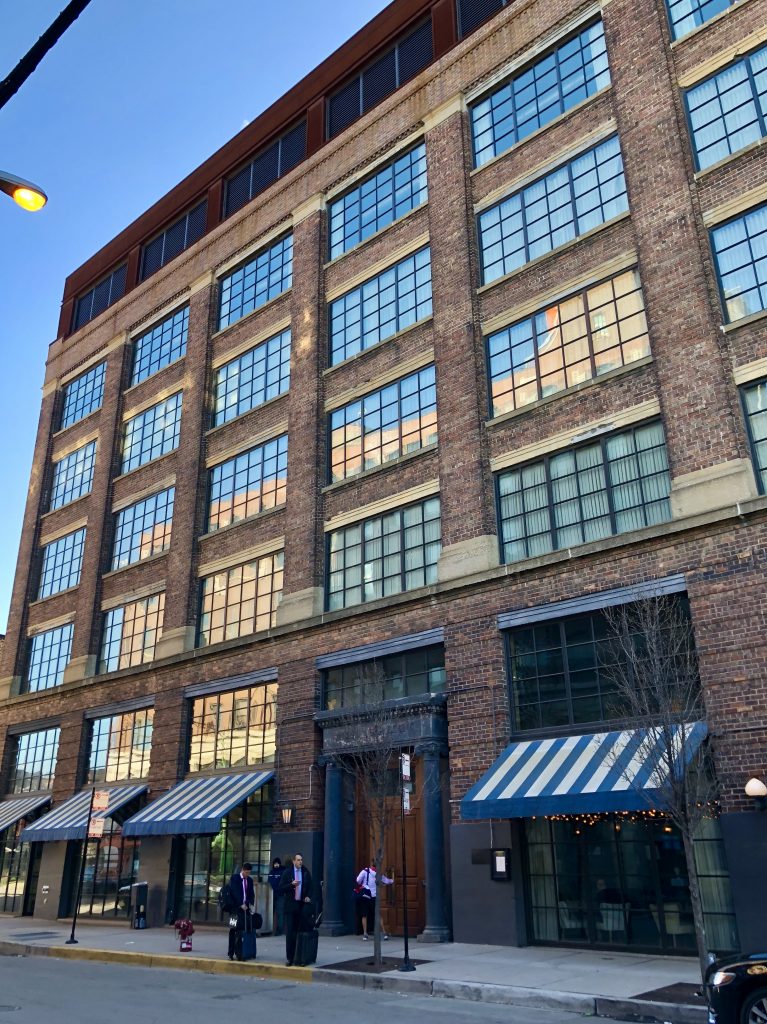
Charles Clinton delves into the risks and benefits of this new source of capital that is drawing in more and more institutional real estate companies, as well as targeted individual investors.

March 7, 2018
Real estate crowdfunding is increasingly attracting investors with its strong yields, potential for outsized returns and reduced volatility, among other potential advantages. This fairly new form of online investing offers a great deal of opportunity, but it also comes with some risks. Charles Clinton, co-founder & CEO of investing platform EQUITYMULTIPLE, delves into the mechanism behind commercial real estate crowdfunding and underlines the most important factors an investor must consider for long-term success.
What opportunities does real estate crowdfunding offer investors?
Clinton: Private commercial real estate investing has numerous benefits as a portion of an investor’s overall portfolio. Despite its advantages, individuals are substantially under-allocated into real estate compared to institutional investors, primarily because real estate has lagged behind other asset classes in terms of transparency and accessibility. By moving real estate syndication online, real estate crowdfunding has begun to change that old paradigm. Individual investors can now invest in private market real estate transactions at low minimums (our investment minimum at is typically $10,000 per offering) and start allocating a portion of their portfolio into real estate without taking on the burdens of direct ownership.
Investors have full transparency into what properties they’re investing in and the low minimums help facilitate diversification. The best platforms also pre-screen the real estate companies and investments that they present, easing the selection burden on investors.
What are the benefits of crowdfunding investment compared to traditional instruments?
Clinton: Strong yield—after years of near-zero interest rates, investors have been forced to look for yield in new places. Less volatility—these investments are illiquid and non-traded, as opposed to public stocks, traded REITs or cryptocurrencies (a topic on everyone’s mind). While illiquidity has its drawback, it also reduces market correlation, making direct real estate investing less subject to market swings and, in aggregate, exhibit less volatility.
Potential for outsized returns—because private real estate markets are inefficient, there is potential for market-beating returns by investing in markets and submarkets that are underserved by traditional sources of capital, and in properties with untapped potential. Downside protection is also an advantage. Real estate—as an irreplaceable resource with tangible value—is also less vulnerable to recessions. The economy will expand and contract cyclically, but a growing number of humans will always need places to live and work.
Then we have tax advantages. Real estate investing platforms allow individual investors to share in the same unique tax advantages as institutional real estate investors—namely write-offs for depreciation, and a new 20 percent deduction for investments made through an LLC, courtesy of the recently-signed tax bill.
What can you tell us about the risks of real estate crowdfunding for investors?
Clinton: First, all investments carry risk, which is important for investors to remember. The risk/return profiles of investments offered through real estate crowdfunding platforms vary quite a bit. For example, we offer shorter-term senior debt and preferred equity investments, which are more secure, offer a flat rate of return and are more appropriate for risk-averse or less experienced investors. We also offer higher-upside, higher-risk equity investments, as a number of other platforms do. It’s important that investors take time to understand the specific risk factors for each offering they consider. Even more so, it’s important that platforms make those risk factors apparent and practice transparency in their presentation of the investment thesis and attendant risks.
Platforms should also practice conservative return modeling, stringent underwriting of both the real estate company running the deal and the deal itself, and a quality-over-quantity approach. Lastly, many platforms only offer investments to “accredited investors.” This helps ensure that the individuals who invest are adequately experienced and have the requisite capital for adding a new asset class to their portfolio.
Crowdfunding hasn’t been around for a long time, but it’s becoming more and more popular. What do investors need to look at before putting their money into such platforms?
Clinton: Investors should consider the people and practices behind any platform they consider investing with. If the management team doesn’t possess significant real estate experience, if the details of investments—and their attendant risk factors—aren’t presented in a forthright, transparent way, if return projections seem too good to be true, if they are unable or unwilling to answer questions. All these things should raise red flags.
It’s still relatively early in the game for the real estate crowdfunding industry. Though results so far have been good for many platforms, keep in mind that we’ve been riding a bull market for the entirety of the young industry’s lifetime. In the long run, winning high marks from investors will be less about hitting home runs 100 percent of the time and more about reasonable expectations, sound diligence measures, transparency and great customer service.
What are your expectations regarding real estate crowdfunding in 2018?
Clinton: The concept is gaining more legitimacy, both among individual investors who fund the deals and the real estate companies looking to tap into a new source of capital. We see this in the growing demand on our platform and investment volumes on other leading platforms, and understand this anecdotally from our customers who were skeptical of the new investment class at first but have grown more comfortable with the new investing paradigm. From that standpoint, I would expect the industry to post triple-digit, year-over-year growth again in capital invested.
On the other hand, macroeconomic factors are a looming challenge. The longer the market remains strong, the more platforms will be tempted to loosen credit standards to find yield. We will eventually, of course, see a market correction (depending on who you ask, we’re well overdue).
In sum, the future is bright for the industry. The U.S. economy and real estate market remains healthy overall, individual investors remain under-allocated in real estate, and real estate crowdfunding continues to win esteem among individual investors seeking yield and greater portfolio diversification. We’re also increasingly seeing institutional real estate companies turn to crowdfunding as a means of financing their projects. These are all great signs. Big picture, we’re seeing the creation of a new type of real estate financial product. In that light, the billions of dollars that will flow through the industry this year are only a drop in the bucket.
JANUARY 17, 2018 | BY PAUL BUBNY
Chosen by a special Federal Reserve committee as its preferred alternative to Libor, the Secured Overnight Funding Rate is tied to “the extremely liquid, high-volume repo market,” Mission Capital Advisors’ Jillian Mariutti tells GlobeSt.com.

“There was no surprise that Libor as we knew it would have to change,” Mariutti says.
NEW YORK CITY—Libor, an index that underpins $350 trillion in financial contracts, has been a benchmark for global borrowing for nearly half a century. But it will soon go the way of BOAC and the Beatles, two British institutions that were still recent history when Libor was devised. Will the sunset of Libor in 2021 plunge lenders and borrowers into darkness and confusion? And what will take its place?
In the view of Jillian Mariutti, director at Mission Capital Advisors, the answer to the first question is no, since the writing has been on the wall since the Libor manipulation scandal of 2012.
As for the second question, the successor to Libor—at least for the US market—is likely to be the Secured Overnight Funding Rate (SOFR), which the Federal Reserve Bank of New York is expected to begin publishing in mid-2018.
First, some background on how Libor is determined. At 11 a.m. Greenwich Mean Time every day, a group of major banks will be asked at what rate could they borrow funds from other banks on an unsecured basis. “Libor was supposed to reflect the actual health of the financial system,” Mariutti tells GlobeSt.com. “If banks feel confident, they report a low interest rate. But if they have a lack of confidence, then they report a higher rate. During the crisis, there was manipulation and collusion; banks were falsely inflating and deflating the rate, and Libor lost credibility because it became unreliable.”
Following the scandal, “there was no surprise that Libor as we knew it would have to change,” says Mariutti. “We all knew it was coming. In fact, in 2014 the Federal Reserve convened the Alternative Reference Rates Committee (ARRC) to explore the alternatives for replacing Libor.”
This past summer, the ARRC chose SOFR as its preferred alternative to Libor. “It’s going to be based on the cleared and bilateral repurchase transactions of the US Treasury,” Mariutti explains. “Put another way, you’re basically looking at the extremely liquid, high-volume repo market,” which generates some $600 billion to $800 billion in transactions daily. “Libor transactions pale in comparison.”
Unlike Libor, an unsecured rate, SOFR is tied to repo transactions and is a secured rate because the Treasury serves as collateral. “So is there going to be some sort of adjustment to SOFR, a spread to SOFR to make it an unsecured comp?” asks Mariutti. “That’s still to be determined.”
As for what happens to loans and other transactions currently tied to Libor and with maturities extending beyond the phase-out, Mariutti points out that “a sizable amount of commercial real estate floating-rate loans mature before ‘21.” Of course, there will be some transition pains, she cautions, as there are plenty of CRE loans that will mature after Libor ceases to be published.
“We all need to make sure we pay closer attention to the replacement language in the loan documents,” says Mariutti. “When you look at your credit agreement, there will be language that says something to the effect of, ‘if Libor no longer exists, here’s your replacement.’ The most common is probably the Fed Funds fallback.”
Mariutti expects Libor and SOFR to exist in parallel with one another for some time before only SOFR is left standing. “It’s probably going to take three to five years before SOFR is a viable Libor alternative,” she says. “We definitely expect a phase-in to be gradual.”
Some dates to look out for: The Fed plans to begin publishing the daily SOFR rate the first half of 2018, to be released at 8:30 a.m. EST daily. Any derivatives of SOFR are anticipated to start trading by year-end 2018. “They’re going to start working on the futures infrastructure, and it probably won’t be until 2021 that you’re going to see an actual SOFR rate show up in credit agreements or interest rate swaps,” Mariutti says.
“Here’s another thought, says Mariutti, “and it would make life so easy. With one fell swoop, could they just change the definition of Libor? If you just changed the definition to ‘SOFR plus 10’ or something like that, then every contract that references Libor would reference SOFR. But everything is still TBD.”
Paul Bubny is managing editor of Real Estate Forum and GlobeSt.com. He has been reporting on business since 1988 and on commercial real estate since 2007. He is based at ALM Real Estate Media Group’s offices in New York City.
Philanthropy at Mission Capital
By Julia Blewitt
At Mission Capital, we value philanthropy, and giving seems more important than ever. This holiday season, two charity organizations, First Bank Employee Fund (Puerto Rico) and Clean Hands for Haiti, will directly benefit from our ongoing philanthropic endeavors.
Mission’s holiday party this December will incorporate a giving component. In light of the natural disasters that have devastated Puerto Rico, which is home to many friends, colleagues and fellow Americans, Mission is requesting an entry donation that will benefit the First Bank Employee Fund. One hundred percent of the proceeds will directly support the most pressing needs of employees in Puerto Rico and the U.S. Virgin Islands, many of whom have lost their homes and belongings and are still in the process of rebuilding. Mission Capital will also match each donation up to $20,000.
Another charity that Mission is passionate about is Clean Hands for Haiti. This holiday season, in lieu of paper cards, Mission will make an additional donation that will support children living in poverty throughout Haiti by providing educational scholarships and access to basic social services for them and their families.
While the holiday season is commonly a time of giving, Mission’s employees donate their time and money throughout the year. Collectively, Mission employees across the country are actively involved in over two dozen local charities.
Julia Blewitt is the Compliance and Operations Manager at Mission Capital. Click here to view Julia’s bio page.

By Anthony Grasso, Mission Global
For over 30 years two federal laws, the Truth in lending Act (TILA) and the Real Estate Settlement Procedures Act (RESPA) have required lenders to provide two separate disclosure forms to consumers applying for mortgage loans, at or before closing. These disclosures had overlapping information and inconsistent language that consumers found to be confusing. In 2015, the Consumer Financial Protection Bureau (CFPB) integrated the mortgage loan disclosures under TILA and RESPA, currently known as the TILA-RESPA Integrated Disclosure rule (TRID).
Since TRID’s inception, lenders have expressed difficulty selling TRID loans on the secondary market due to investor concerns over potential liability for minor errors. The CFPB stated that enforcement efforts in the beginning were focused more on lenders making good faith efforts to comply with the new rules; however, investors’ concerns on the other hand revolved around potential statutory and assignee liability. TRID loans have undergone strict reviews by regulators and due diligence providers with high error rates in the first year and a half since inception. Initially it was reported that over 90 percent of the loans reviewed contained TRID errors.
Industry participants have interpretative disagreements with various aspects of the law, and TRID loans are scrutinized more closely as they make their way through securitizations. Lack of regulatory cures and out-of-date statutory cures remain key issues. Regulatory cure provisions under Regulation Z only provide cures for non-numeric clerical errors and increases in closing costs. They lack the cure provisions for numerical clerical errors that cause liability concerns inhibiting secondary market investors from purchasing TRID loans initially deemed out of compliance.
The statutory cure provision resides in Section 130(b) of the Truth in Lending Act (TILA) that protects the lender, or assignee of the loan, from liability. The cure provisions in 130(b) are outdated, and focus primarily on refunding under-disclosed APRs and finance charges. However, 130(b) cure provisions are currently utilized on numerical errors that cannot be cured through the regulatory cure mechanism. Due Diligence firms have started using 130(b) cure provisions on numeric TRID violations that have “potential statutory liability” to cure incurable unsaleable loans. It is ultimately left up to the investors to either accept the Section 130(b) cures for numerical clerical errors on TRID loans, or have them remain incurable saleable loans. Industry participants and due diligence firms have started to adopt the 130(b) cure provisions in their loan reviews.
The CFPB recently issued TRID 2.0 final rules that have updated TRID regulations that become mandatory on October 1, 2018. The CFPB clarifications should put to rest many of the interpretative disagreements with the law to allow market participants and Due Diligence firms to be more aligned in their compliance reviews. Some of the significant changes with TRID 2.0 include clarification of no tolerance fees, construction loan disclosures, written provider lists, re-disclosures after rate lock, and cost reductions after initial LE. For the most part, overall reaction to these changes has been positive because the CFPB addressed many uncertainties in the original rule that pertained to assignee liability. However, others in the industry have been disappointed that additional cure provisions for violations were not included.
Mission Global delivers custom solutions to our clients for TRID reviews by leveraging our deep transactional experience, proprietary technology, subject matter expertise and best-in-class talent. Click here to learn more.
See current transactions now in our market place, MissionMarket or return Home.

Congratulations to our very own Michael Britvan!
Michael Britvan of our Loan Sales and Real Estate Sales team has received Connect Media’s Next Generation award for the New York area. We’re very pleased!
Get in touch with Mr. Britvan now to learn about new opportunities. You can reach Michael Britvan directly through his team page.
More information is available at Connect Media here.
[Published by Connect Media:]
Connect Media is pleased to announce the winners of our first annual Next Generation Awards.We chose 25 young leaders throughout the U.S. who are already making big contributions and are likely to be influential in our industry for a long time — because of their talent, drive and fresh ideas. We picked these winners from more than 150 nominations sent in by our readers from all parts of the country and from all sectors of the commercial real estate industry — from architecture to development to finance and property sales.
After careful consideration (and some spirited deliberations), we recognized five young leaders from each of the three areas covered by our regional newsletters: California, Texas and New York. We chose another 10 National winners covering the rest of the country.
Come see our honorees accept their awards at:
– Connect New York on Sept. 19 2017 at The Underground, Rockefeller Center
– Connect Apartments on September 28, 2017 at the InterContinental Los Angeles Downtown
– Connect Houston on November 2, 2017 at Station 3
– Connect Westside L.A. – December 2017, location to be determinedOnce again, congratulations to Connect Media’s 2017 Next Generation Awards winners.
Investors in residential loan portfolios routinely engage third-party experts during the bidding and acquisition process to analyze risk, data capture / validation and compliance testing. However, the most successful investors realize that Servicing Surveillance and Servicer Reviews are critical for risk management and simultaneously enhance portfolio performance.
While loan servicing has been big business for many decades, the basics have changed little over the years. Payments are received and processed; escrow accounts are monitored and managed for payment of real estate taxes and hazard insurance premiums; investor remittances are tracked and paid; and late payments are chased. What has changed is the complexity of state and federal laws and regulations, the emergence of debtor friendly courts and litigious borrowers. These factors have exponentially increased the complexity and inherent risk of debt collection procedures, which directly affect investor risk.
Debt collection and delinquency control is not what it used to be. Servicers must ensure their collections, loss mitigation and foreclosure departments are fully trained in the ever changing landscape of local legal requirements at the municipality, county and state level. This training includes proper procedures for collection calls, required letters and notifications pertaining to servicing transfers, delinquency resolution, foreclosure / bankruptcy steps and timeline management. Federal laws and regulations also have overhanging risks of borrower litigated disputes, contested foreclosures and regulatory audit.
The result of this expansion in risk is the growth and importance of servicer oversight, audit and review. Servicing surveillance creates a liaison between an investor and their servicer, providing important risk management and servicing remediation information to a broad set of stakeholders. These include major domestic and international banks and investors, private hedge funds, legal and consulting firms, as well as both large corporate and specialized boutique servicers.
Servicing Surveillance and Servicer Reviews are not only critical for regulatory responsibilities but are also important for investment performance and measuring counter-party risk. Best practices in the field of Servicing Surveillance and Servicer Reviews include the following:
Policy and Procedures (“P&P”) Reviews: Confirmation that servicers’ published P&Ps are revised and updated regularly to reflect changes in current industry standards, newly enacted legal requirements and published industry best practices.
Servicer Operational Reviews: Assessment of servicer’s performance and adherence to their internal P&Ps, stand-alone Servicing Agreements and/or Pooling and Servicing Agreements.
Servicer Oversight: Ongoing identification of loan level systemic servicing issues needing resolution to increase loan performance and decrease loss severity.
Asset Management: Analysis of Collection and Loss Mitigation activity, for both whole loan and securitized mortgage portfolios, including loan level reviews, foreclosure and bankruptcy timeline management, and delinquency cure methods on Client-selected loan populations.
Reps and Warrants Examination: Forensic loan level review identifying possible breaches in loan seller’s representation and warrants, and highlighting non-compliance issues affecting investor recovery opportunities.
MERS Third Party Attestation: Third party review and validation of the accuracy of MERSCORP members required portfolio policy and procedures documentation and portfolio monthly self-audit and reconciliation process.
Securities Surveillance Identification and monitoring pool asset trending and stratification, providing the investor with the benefit of early identification of potential or existing problems, and recommendations for remedying any discovered issues before they affect asset quality.
Servicing Transfer QC: Boarding oversight and critical balance reconciliations to ensure accuracy and seamless servicer-to-servicer transfer for an uninterrupted flow of servicing activities.

Mission Global delivers custom solutions to our clients for Servicing Surveillance and Servicer Reviews by leveraging our deep transactional experience, proprietary technology, subject matter expertise and best-in-class talent. Click here to learn more.
June 13, 2017
Economists overwhelmingly predict a short-term interest rate hike coming this week following the Federal Reserve’s two-day board meeting on Tuesday and Wednesday.

Should the Fed proceed as projected and bump its benchmark rate by a quarter point to a range of 1% to 1.25%, it will mark the fourth move made since December 2015. Bisnow reached out to commercial real estate experts to take their pulse on the current economic environment and how a rate boost, coupled with the volatility plaguing Washington, will affect the industry. From compressed cap rates to reduced deal flow, this is what industry experts had to say.
“When we look at the recent rate hikes, the Fed waited a year after December 2015 to raise rates last December, but that really wasn’t about our economy — it was due to a range of geopolitical issues. From the Chinese stock sell-off in the beginning of the year, which drove the S&P down precipitously, to Brexit to the raucous U.S. elections, 2016 was a tumultuous year headlined by non-economic issues; the result was that the Fed chose to keep rates low, despite strong economic performance.
“With unemployment at 4.3%, its lowest level in 16 years, and the economy performing well across the board, there’s every reason to believe that the economy is prepared for another rate hike.
“Following the most recent rate hikes, we’ve seen cap rates stay tight, as high liquidity and strong foreign investment activity have counteracted the interest rate rise. The Fed hiking rates further is really a signal that the economy is in a period of growth. While borrowing costs will clearly rise, the strong economy may also give investors the ability to achieve higher rents (in all asset classes). Because of this, we don’t expect to see significant moves in terms of either valuations or cap rates.”
Jillian Mariutti, Mission Capital Advisors debt and equity broker
“When we look at the recent rate hikes, the Fed waited a year after December 2015 to raise rates last December, but that really wasn’t about our economy — it was due to a range of geopolitical issues. From the Chinese stock sell-off in the beginning of the year, which drove the S&P down precipitously, to Brexit to the raucous U.S. elections, 2016 was a tumultuous year headlined by non-economic issues; the result was that the Fed chose to keep rates low, despite strong economic performance.
“With unemployment at 4.3%, its lowest level in 16 years, and the economy performing well across the board, there’s every reason to believe that the economy is prepared for another rate hike.
“Following the most recent rate hikes, we’ve seen cap rates stay tight, as high liquidity and strong foreign investment activity have counteracted the interest rate rise. The Fed hiking rates further is really a signal that the economy is in a period of growth. While borrowing costs will clearly rise, the strong economy may also give investors the ability to achieve higher rents (in all asset classes). Because of this, we don’t expect to see significant moves in terms of either valuations or cap rates.”
Chris Muoio, Ten-X quantitative strategist
“The commercial real estate market has seen deal volume drop in recent quarters as rising interest rates have increased financing costs and caused a divergence in pricing expectations among buyers and sellers. This was particularly affected by the spike in rates seen towards the end of 2016. The sudden nature of the shift in rates caused some deals that were agreed upon to be scuttled or renegotiated. Pricing has remained steady near cycle highs as cap rate spreads compressed to offset the rise in rates for the most part, but growth has plateaued, as the tailwind from interest rates has dissipated and the growth in fundamentals has cooled in many sectors.
“We believe the economy is prepared for at least one more hike this year, and possibly two … A rate hike in June feels fully baked into interest rate markets, and we would imagine most commercial real estate investors are prepared for this eventuality. Cap rate spreads would likely compress slightly to offset the modest rise, and we wouldn’t imagine a substantive effect on volumes due to the visibility around the move.
“With the tailwind of falling rates disappearing, fundamentals will become more important to pricing. This makes the hotel and retail sectors most vulnerable, as they have struggled to generate [net operating income]. Apartment is also potentially vulnerable as it has the tightest cap rate spreads, begging the question of how much more compression is possible, but apartment fundamentals have been solid thus far.”
Chris Thornberg, Beacon Economics principal
“Actually rates have barely budged and they are already fading from the Trump bump. The 10-year is hovering barely above 2% currently. As such I would be hard-pressed to call this a rising interest rate environment.
“If they raise (which may not happen), the real question is how much of a spillover [will there be] into long-run rates. The primary issue is the yield curve. If they do keep tightening, it will put the squeeze mainly on banks and other lenders. Banks have already become shy of construction and commercial lending — both in terms of volumes and spread. Tighter credit will have some dampening effect on the industry — but it’s not the interest rate, rather credit availability.
“The sectors that will see the biggest hit from tighter credit are those already on the front lines: construction and multifamily.”
Rajeev Dhawan, Georgia State University/J. Mack Robinson College of Business director of economic forecasting
“This June rate hike has been telegraphed for a while, but the Fed is now becoming cautious about any more hikes this year as some of their recent speeches have broadly hinted.
“Rate hikes are almost always in response to the economy running above its potential growth, and the evidence of that has been very mixed in recent months. Throw in the D.C. politics and the picture gets muddy when you look ahead. Has that impacted deal-making in CRE? It certainly hasn’t helped.
“Remember, foreign investment in domestic real estate deals is the icing on the cake and at some coastal cities it may be the entire cake. That is the flip side of the trade deficits … we run with our major trade partners, such as Germany, China, Mexico and the EU as a whole. Any impediments to trade, promised during the campaign time, which are now being considered, will not be good for the real estate sector as a whole, especially in the coastal markets. These areas should brace themselves for the inevitable ‘trade skirmishes’ later this year.”
Raymond Torto, Harvard Graduate School Of Design lecturer
“REITs indices kept pace with the general market in the last six months [and were] even a bit better as the assumption [took hold] that a better economy will be good for real estate.
“The economy can handle a rate increase, [though it remains] unclear if turmoil in D.C. will undermine confidence and the economy. “There has been no impact to date on [property valuations] as prices have held during the first half of the year. Volume is down, reflecting a pause in buying.”